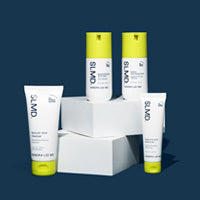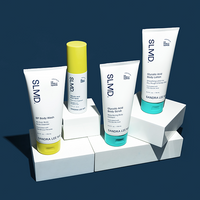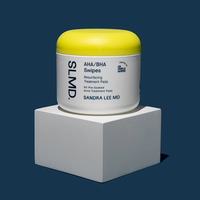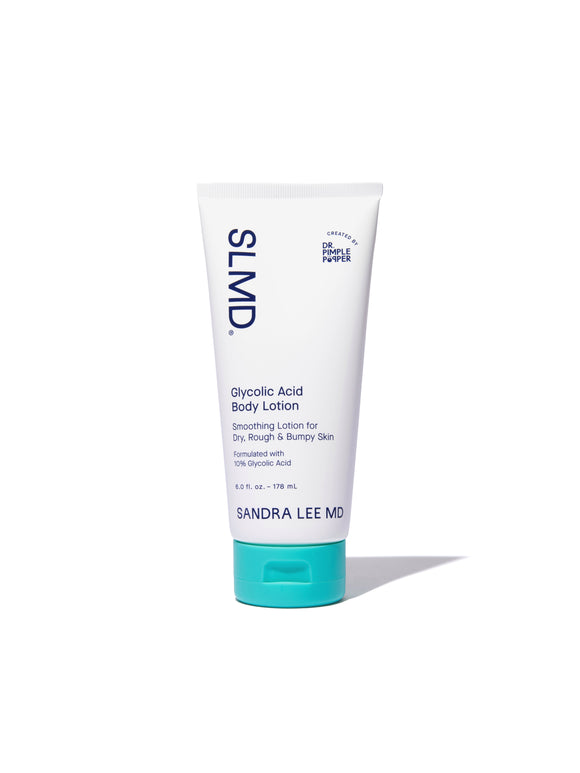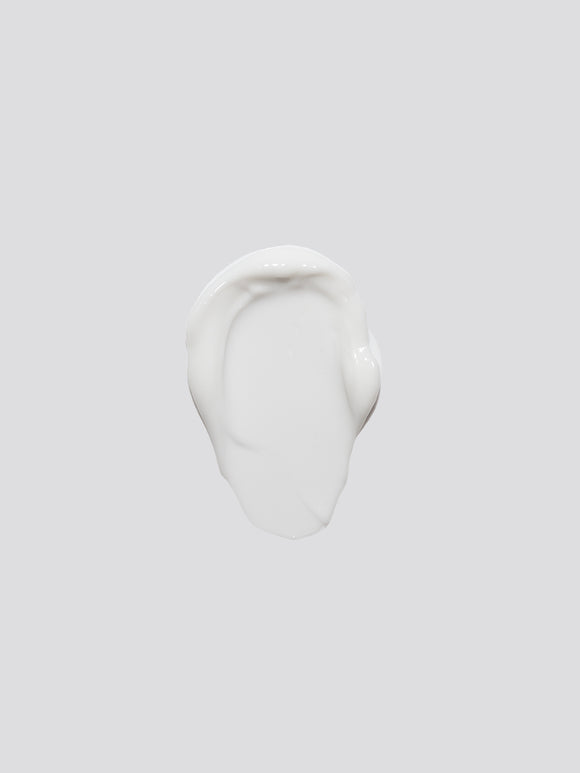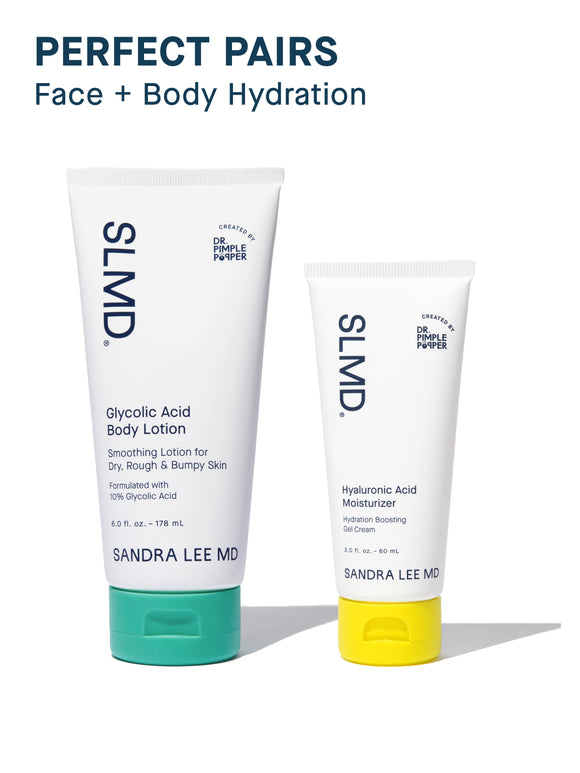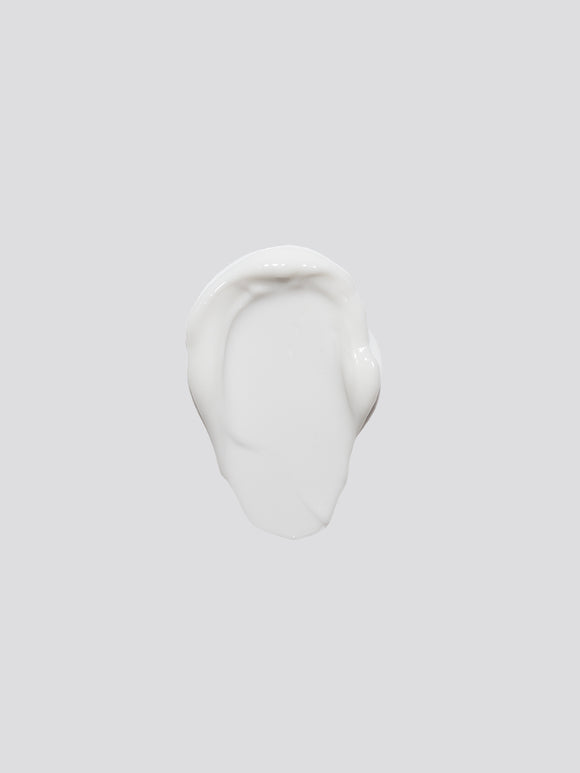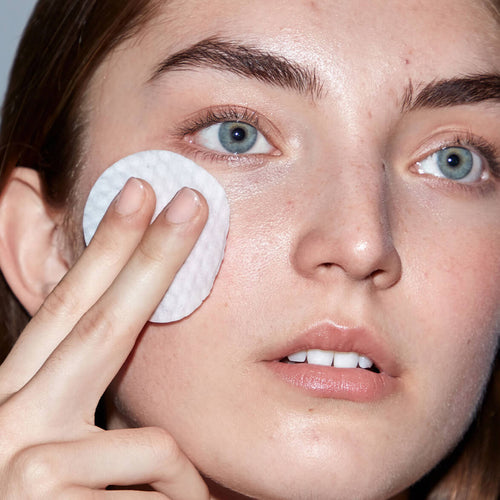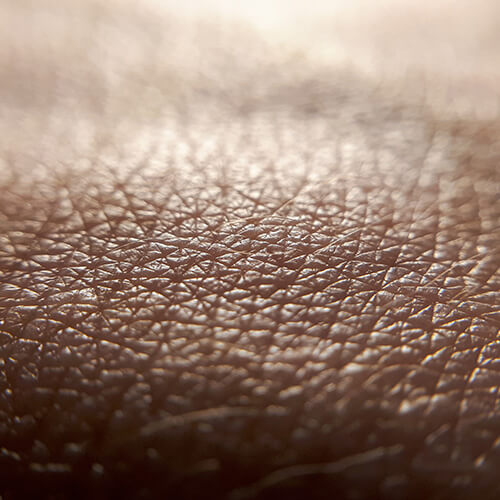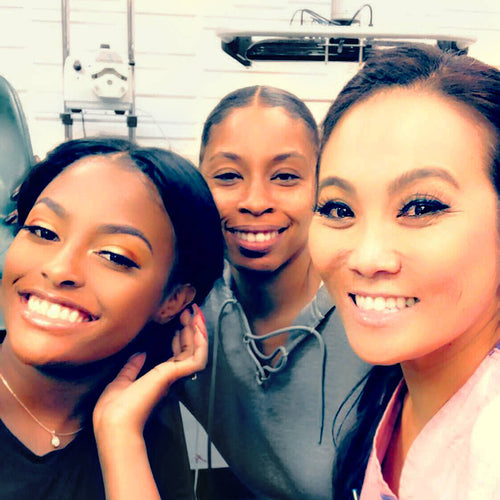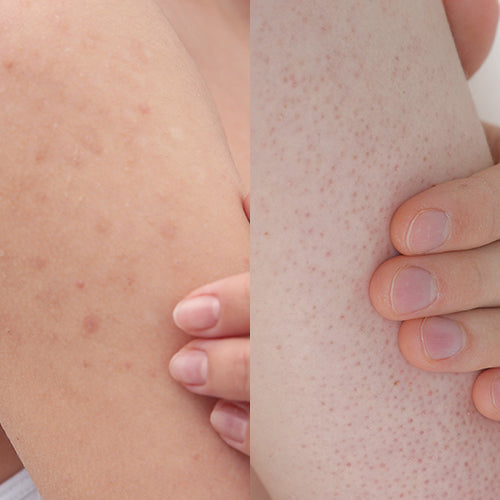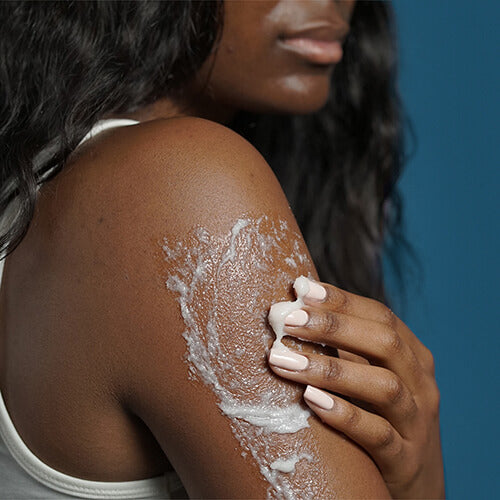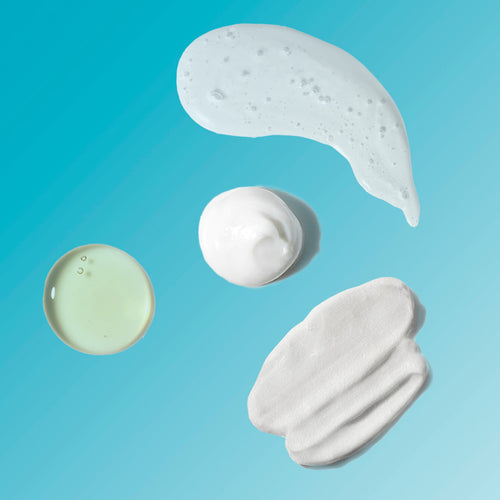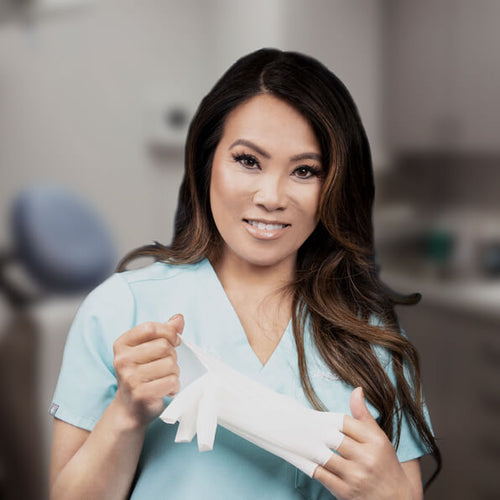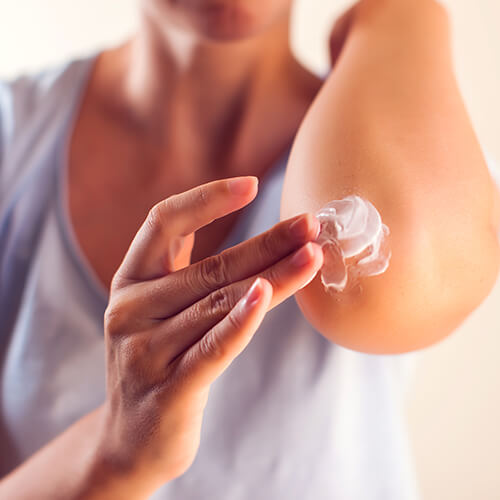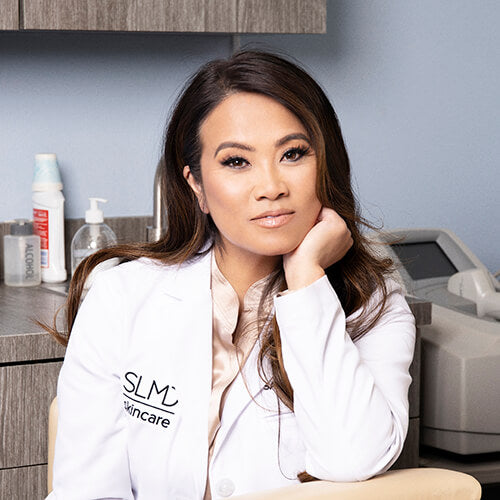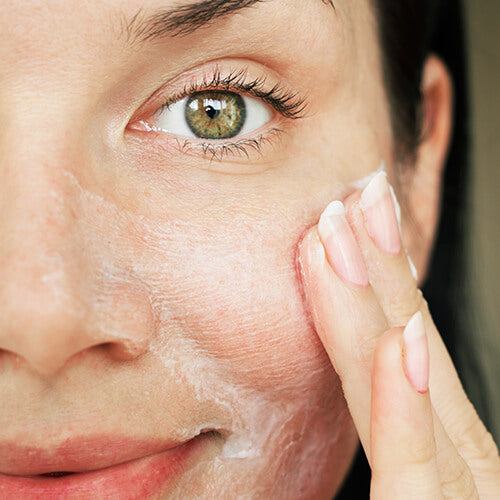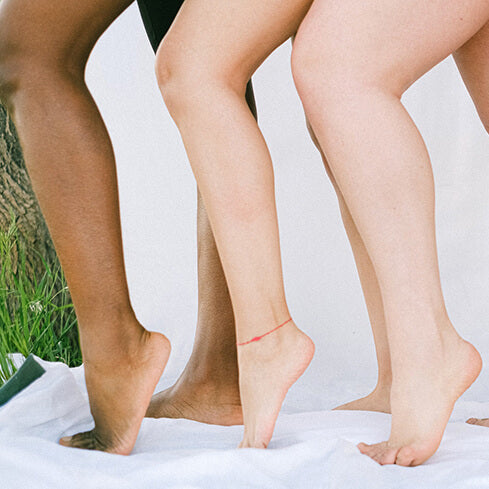
How to Soothe Your Keratosis Pilaris at Home
Get rid of those dry, rough "strawberry skin" bumps without a trip to the dermatologist.
Published:
3 minute read
Do you have small, rough bumps on your thighs, arms, cheeks or butt that you just can’t seem to get rid of? Many people don’t realize that these bumps are a sign of a skin condition called keratosis pilaris. Often referred to as strawberry skin or chicken skin, KP forms when excess keratin builds up inside the pores and creates hard plugs that lead to those signature rough bumps.
According to dermatologist and SLMD Skincare founder Sandra Lee, MD (aka Dr. Pimple Popper), KP is extremely common — and fortunately, simple to care for at home. While it’s always a good idea to consult your doctor, Dr. Lee has some skin care suggestions for soothing your keratosis pilaris on your own.
#1 Wash your skin the right way
When washing KP-prone skin, start with lukewarm (not hot) water. Lukewarm temperatures cleanse effectively without stripping the moisturizing oils your skin naturally produces.
You’ll also want to avoid harsh or drying ingredients, heavy fragrances, and comedogenic products. These can irritate the skin or block pores, making keratosis pilaris more noticeable.
Take your time when bathing. Use your fingertips to gently massage skin in circular motions, rinse thoroughly so no residue remains, and pat dry with a soft towel. Wash at least once a day — more often if you sweat.
Dr. Pimple Popper tip: "Keep your showers short, since long, hot showers can strip moisture and make KP bumps more noticeable."
#2 Exfoliate gently and often
Because keratosis pilaris is caused by excess keratin, exfoliation is essential. Dr. Lee recommends using both physical and chemical exfoliants. Look for finely ground particles — like pumice, clay or powdered bamboo — paired with alpha hydroxy acids such as glycolic acid or lactic acid.
“A lot of people with KP assume scrubbing harder will smooth their skin, but harsh exfoliation can actually make irritation and bumps worse,” says Dr. Lee. That's because this type of force can damage the skin barrier by causing micro-tears. “Gentle physical exfoliants paired with AHAs can smooth KP effectively without irritating the skin,” she notes.
If you have sensitive skin, start slowly and increase frequency as tolerated.
Try: SLMD Glycolic Acid Body Scrub — a gentle physical-and-chemical exfoliating formula made with hydrating glycerin and hyaluronic acid.
#3 Hydrate and moisturize daily
Hydrating and moisturizing are two different steps, and both are important when you’re dealing with KP. Hydrating ingredients bring water into the skin; moisturizing ingredients help seal that hydration in.
“Dryness makes KP bumps look and feel more pronounced,” says Dr. Lee. This helps explain why the condition often improves during the summer and becomes more noticeable in colder, drier months.
The right moisturizer helps seal in water, supports the skin barrier and alleviates dryness or itching. Look for formulas containing hydrators, soothing ingredients and chemical exfoliants. Apply your moisturizer right after showering to lock in maximum hydration, and reapply as needed throughout the day.
Try: SLMD Glycolic Acid Body Lotion — a hydrating and exfoliating formula with aloe and niacinamide to support smoother-looking skin.
#4 Pick the right ingredients
Dr. Lee’s favorite ingredients for treating strawberry skin are alpha hydroxy acids: water-soluble exfoliants that help break down excess keratin and smooth rough texture.
- Glycolic acid. The smallest AHA, known for breaking up dry, rough skin cells, boosting hydration, stimulating collagen, and improving skin tone.
- Lactic acid. Softens keratin, boosts hydration, supports ceramide production and reduces inflammation for smoother, firmer skin.
- Salicylic acid. A beta hydroxy acid that penetrates the pore to soften and loosen excess buildup.
- Retinol. A vitamin A derivative that supports healthy cell turnover, helping keep pores clear while improving texture and tone.
- Niacinamide. A B vitamin that strengthens the skin barrier and reduces visible redness or irritation.
- Aloe. A naturally soothing ingredient that calms, hydrates and comforts skin without clogging pores.
Try: SLMD Body Smoothing System — a two-step scrub and lotion routine that helps soften rough texture and support smoother-looking skin.
#5 Watch what you eat
You may have seen keratosis pilaris “diets” online, but there’s little scientific evidence connecting specific foods directly to KP. That said, some people do notice improvements when they add omega-3 fatty acids or vitamin A, or when avoiding foods like dairy or gluten. It’s fine to experiment, just check with your doctor first.
Research does show that KP becomes more likely as BMI increases, which may relate to the fact that people with obesity often have drier skin overall. But more research is needed. Dr. Lee emphasizes that eating a balanced, nutrient-dense diet helps support overall skin health, including conditions like KP.

Dr. Lee's Last Word
While there’s no cure for keratosis pilaris, my patients are always relieved to learn there are simple, effective ways to manage it at home. My biggest piece of advice is to stay consistent with a gentle exfoliating and moisturizing routine — it’s the key to keeping skin smooth, comfortable and cared for over time.
